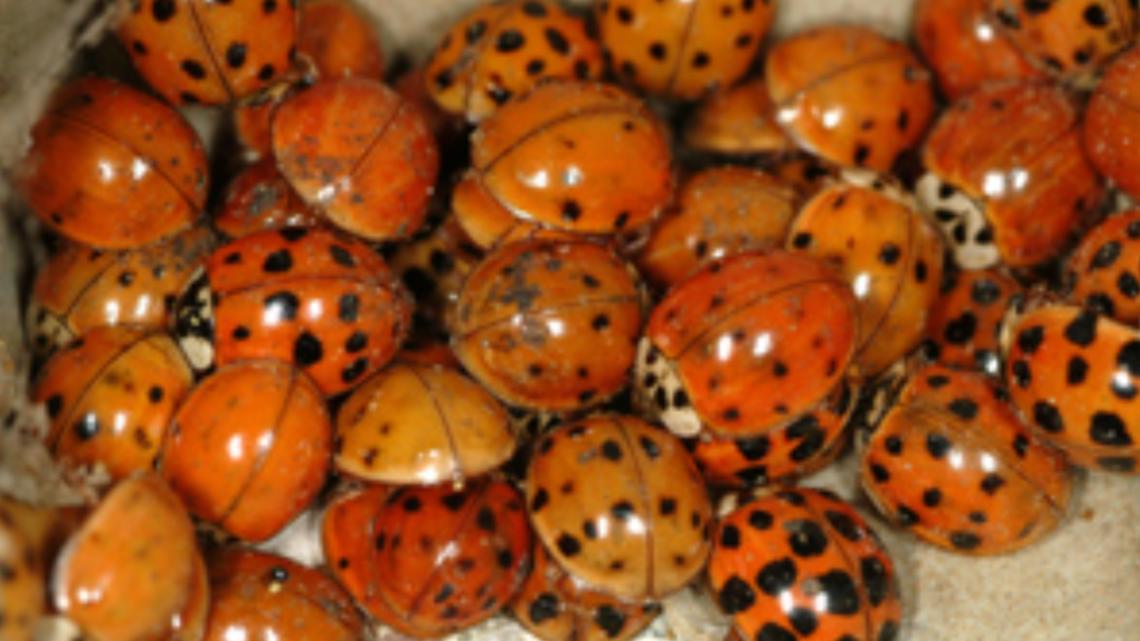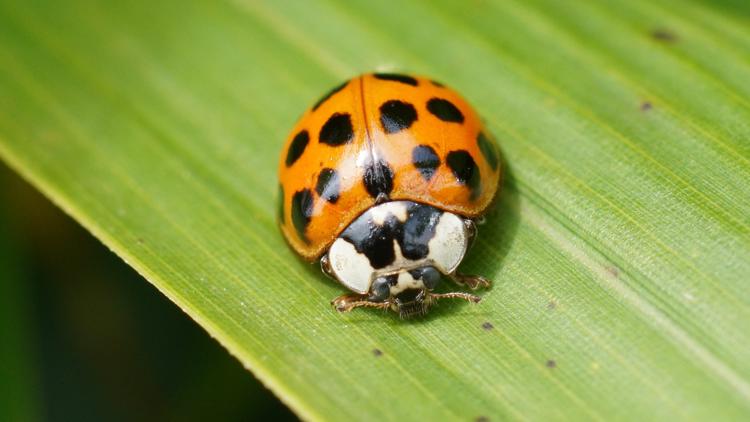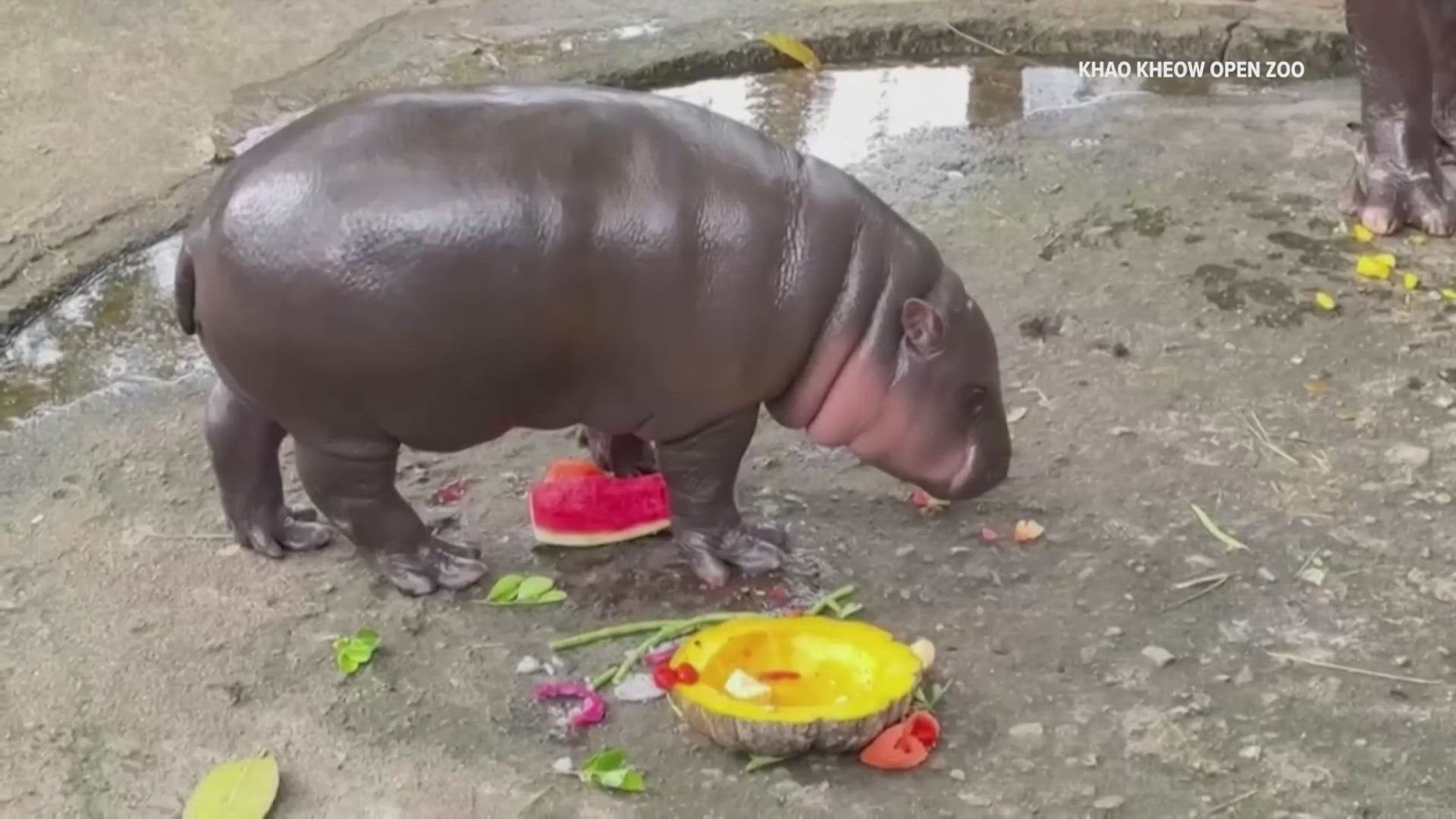LOUISVILLE, Ky. — As you're setting up Halloween decorations and visiting pumpkin patches this fall, you may see a bug that appears to be a ladybug, but very much isn't.
Small beetles are invading homes across Kentucky. They look like native ladybugs, however, Asian lady beetles can be slightly larger and come in various shades of red and orange.
Another way to tell the two apart is by looking at the bug's head. The Asian lady beetles have a noticeable "M" marking near its shell.
As temperatures outside drop, these insects will try to stay warm by seeking refuge in homes and businesses across the Bluegrass State.
Where did they come from?
Asian lady beetles are relatively new to the United States. The beetle is native to Asia (China, Russia, Korea, Japan, etc.)
From 1960 to the 1990s, the U.S. Department of Agriculture released large numbers of the beetles to several U.S. states to control agricultural pests. These states included Georgia, South Carolina, Louisiana, Mississippi, California, Washington, Pennsylvania, Connecticut and Maryland.
No releases were ever attempted in Kentucky, according to the University of Kentucky. Scientists believe they are here due to northward migration from other southern states.
Some scientists believe these current infestations in the U.S. originated not from intentional releases, but from beetles accidentally transported into New Orleans on a freighter from Japan.
What you need to know about Asian lady beetles
Unlike native ladybugs, the Asian lady beetle can bite. They use their mandibles to pinch the skin, which can sometimes be felt and break skin.
Also unlike native ladybugs, they create a foul smell. Through a process called reflexive bleeding, they release a pungent liquid through their joints that is yellow in color and smells bad. This response is triggered when the bugs are surprised or in danger.
An Asian lady beetle can live anywhere between 30 and 90 days, though most are expected to die off when we start to have a consistent freeze.
As autumn approaches, the lady beetles leave their summer feeding sites in yards, fields and forests for protected places to spend the winter. Unfortunately, homes and buildings are one such location.


Swarms of lady beetles typically fly to buildings in September though November depending on locale and weather conditions. In Kentucky, most migration to buildings occurs in October.
Studies have shown that Asian lady beetles are attracted to illuminated surfaces. They tend to congregate on the sunnier, southwest sides of buildings illuminated by afternoon sun. Homes or buildings shaded from afternoon sun are less likely to attract beetles.
Once inside, they seek out crevices and protected places to spend the winter. They often congregate in attics, wall cavities, and other protected locations.
Typical locations include cracks around window and doorframes, behind fascia boards and exterior siding, and within soffits, attics, and wall voids. Structures in poor repair with many cracks and openings are most vulnerable to infestation.
How to get rid of Asian lady beetles
If you see these pests in your home, a good way to get rid of them while avoiding the release of liquid is to use a vacuum to suck them up and dispose of them outside of the house.
A more permanent way to prevent Asian lady beetles from entering your home is to seal cracks and openings around windows, doors, soffits, fascia boards, utility pipes and wires, etc., with caulk or other suitable sealant.
If lady beetles are a persistent problem, owners may want to consider hiring a professional pest control company to apply insecticides to the exterior of the house.
To be effective, barrier treatments should be applied before the beetles enter buildings. In Kentucky, the proper timing for such treatments is typically late-September to early October although this will vary with seasonal conditions. During late winter or early spring, barrier treatments are ineffective since the beetles gained entry the previous autumn.
For more information on Asian lady beetles in Kentucky and how to get rid of them, click here.



